[ soundtrack: Mireille Mathieu sings La Marseillaise ]
***
I’ve written a fair bit about sharpening / honing before; It’s part of my working day and without really sharp cutting edges, handtools are just a pretension.
Being able to sharpen easily and getting consistently good results is a basic skill for a woodworker. It’s also something I like doing; there is a certain thrill to a cutting edge that’s so shiny and wickedly sharp it seems downright bloodthirsty. It makes me feel … if not like a Master of the Universe, then at least like the Surveyor of My Immediate Surroundings.
I don’t test my edges by cutting paper, shaving my arm or dragging it across a fingernail, I just touch it with a finger — ginger carefulling! — to feel how much it wants to draw blood. You learn to recognize the threat.
These last four or five years I’ve been honing using abrasive sheets on glass:
In combination with a Lie-Nielsen honing guide I get predictably good results:
When I started out I was taught the usual method, using a bench grinder and freehand honing on oilstones. In short: chasing the burr …
Of course, I still have my oilstones; I keep them wrapped in an oil-soaked bath towel inside an old .50 cal. ammo-box.
Inbetween those methods I spent a few years honing on diamonds:
I’ve even tried replacing my grinder (for shaping / changing primary bevels) with coarse, self-adhesive sandpaper (‘3M GOLD’) on a long, thick plate of glass. It wore out my honing guide, but is well suited to flattening plane soles.
Since I made some stropping blocks before Christmas, I’ve been experimenting with a new set-up; I still do my plane irons on the glass as before, but I’ve taken to keeping an old translucent Arkansas stone and a stropping block close by the bench, so I can easily touch up my workaday chisels; they dull quicker than the plane irons because they see more aggressive and varied use.
A spritz of CRC 5-56 or WD-40 on the stone, then a quick rub-a-dub before dragging up a shine on the lathered leather.
This works well for me, so I’m planning to ‘formalize’ this arrangement — I’ll bother you at length in due course.
But what I was really wanting to write about was my latest foray into the land of honing compounds and bits of leather. There is no shortage of sharpening mediums at the coarse end of the scale, but at the fine end the choices are more limited — and sometimes expensive. Honing compunds are basically wax mixed with a graded, abrasive ‘powder’, commonly Aluminium Oxide (AlOx) or Silicon carbide (SiC). Applied to a cheap substrate (wood, plywood, leather, steel …) they could be an economical way around having to buy increasingly costly Arkansas oilstones or irritatingly soft, messy and expensive Japanese waterstones. What attracted me to ‘adhesive grits on glass’ in the first place was the affordable price.
Since then, I’ve come across an interesting offering by M-Power Tools: they sell a set of diamond plates (that only go so far as regards fine-grit honing), but supplement that range by offering honing waxes and suitable, leather honing/stropping blocks. It’s an obvious solution to a gritty problem, but I reckon I can make my own stropping blocks without expensive aluminium extrusions, so I just bought the abrasive wax sticks:
If I am to believe the marketing, I have bought 3 grades of Polishing Wax: 1800, 2500 & 5000 Grit.
I’ll let you know how I get along. It will take some time to garner the necessary experience.
***

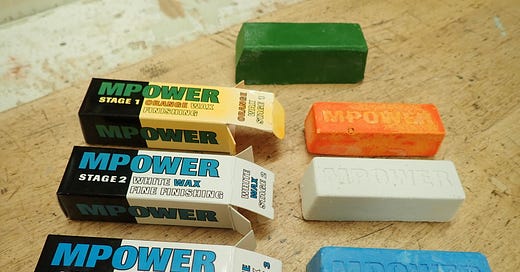


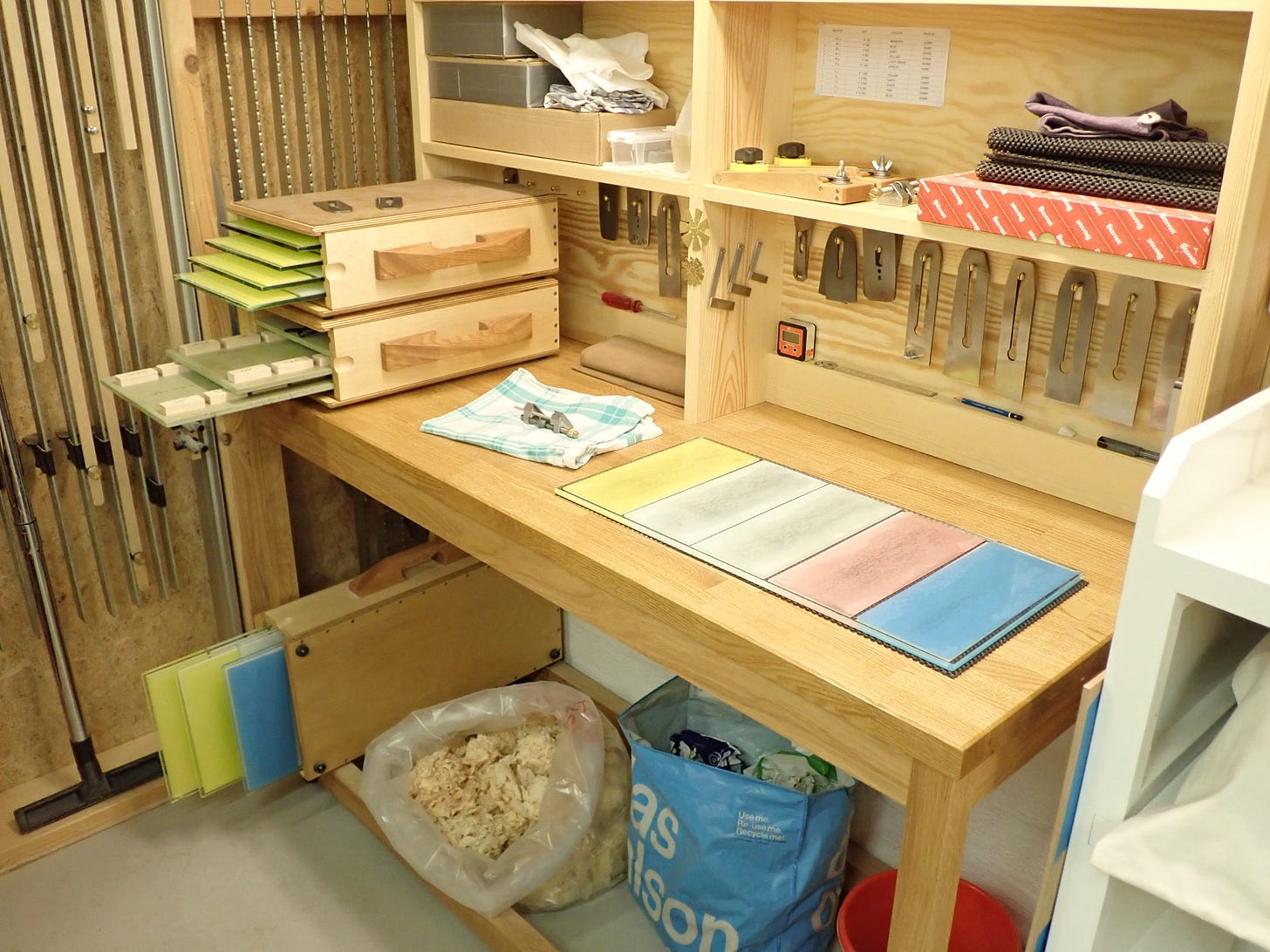
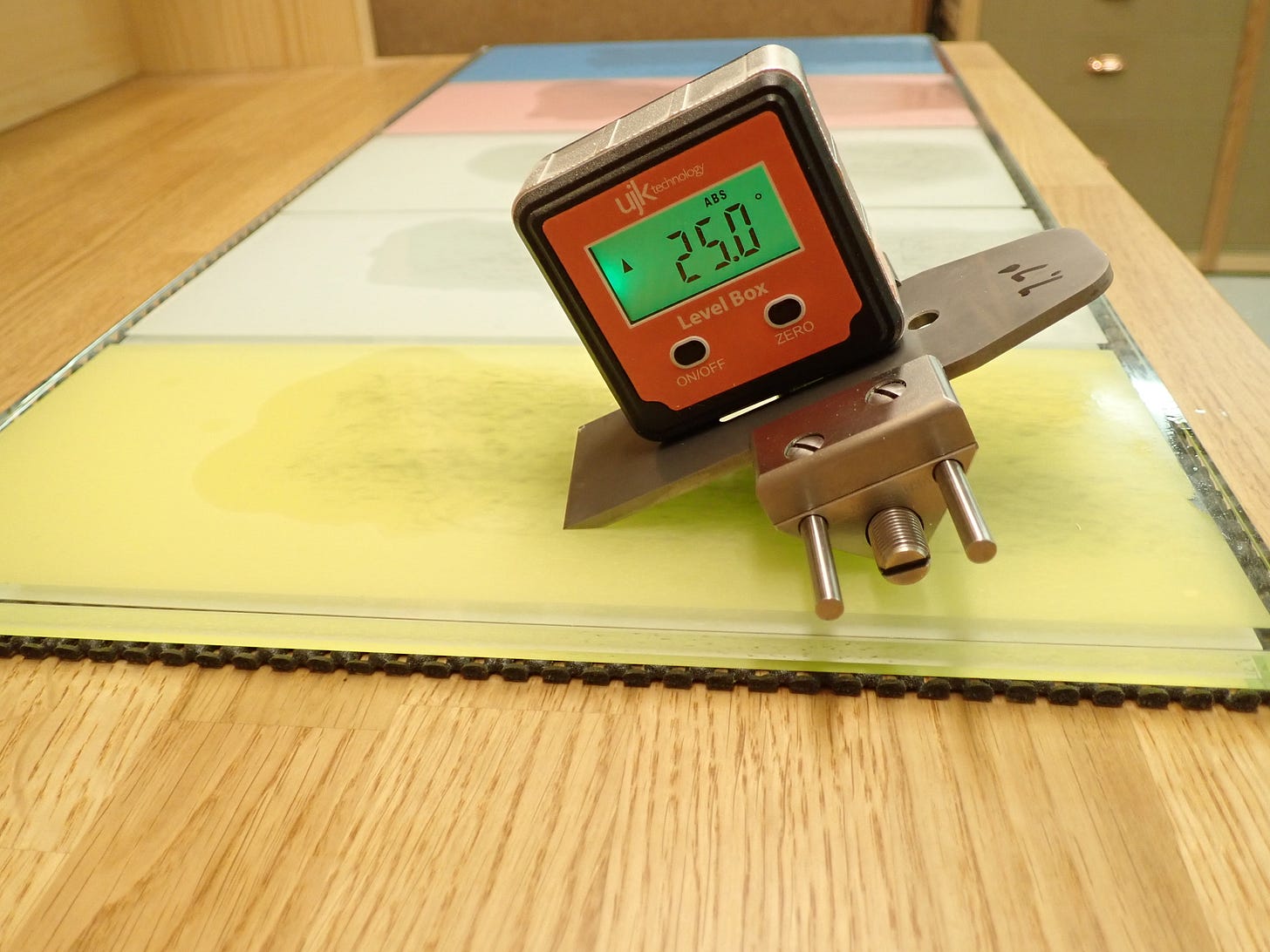
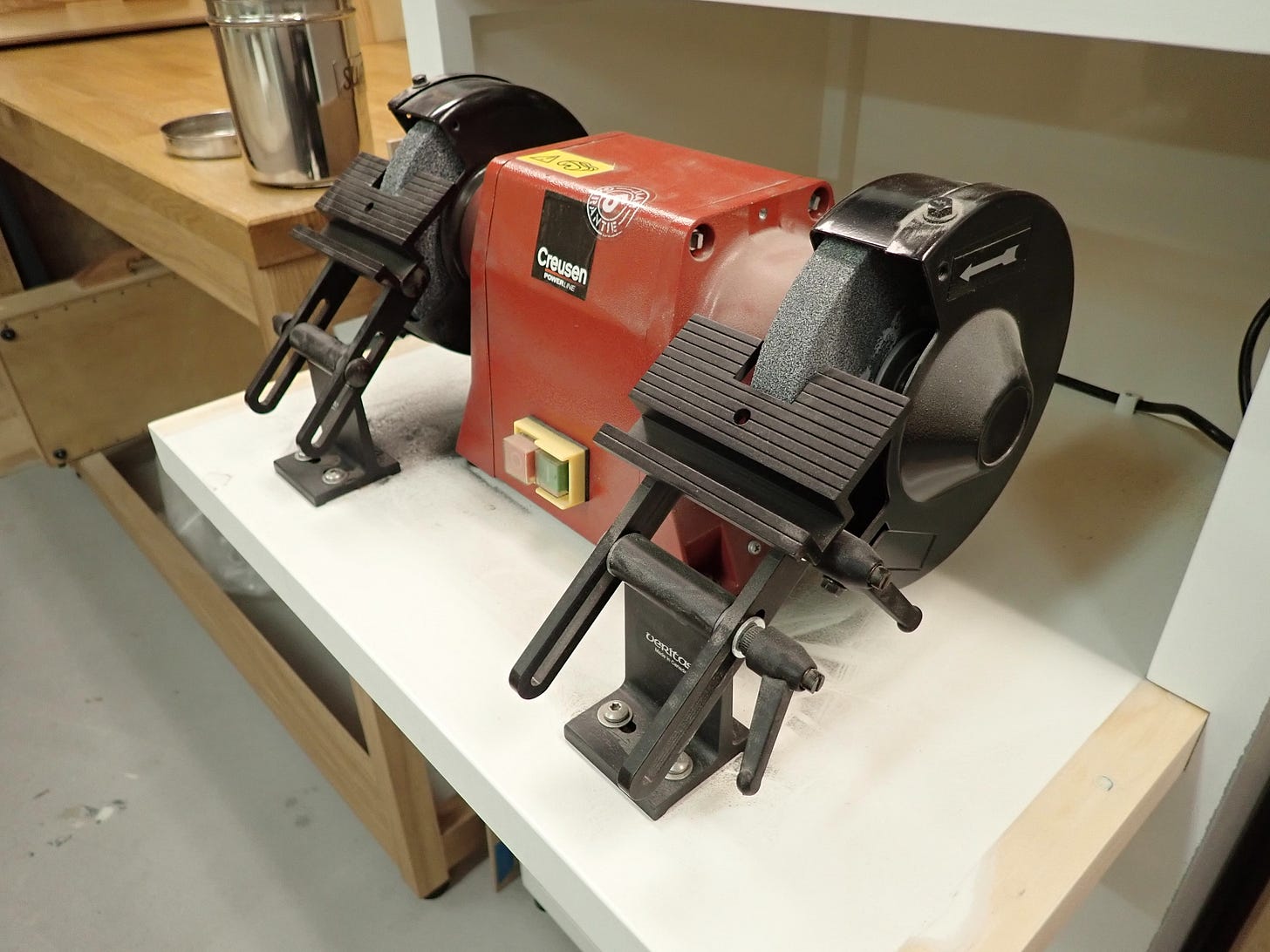
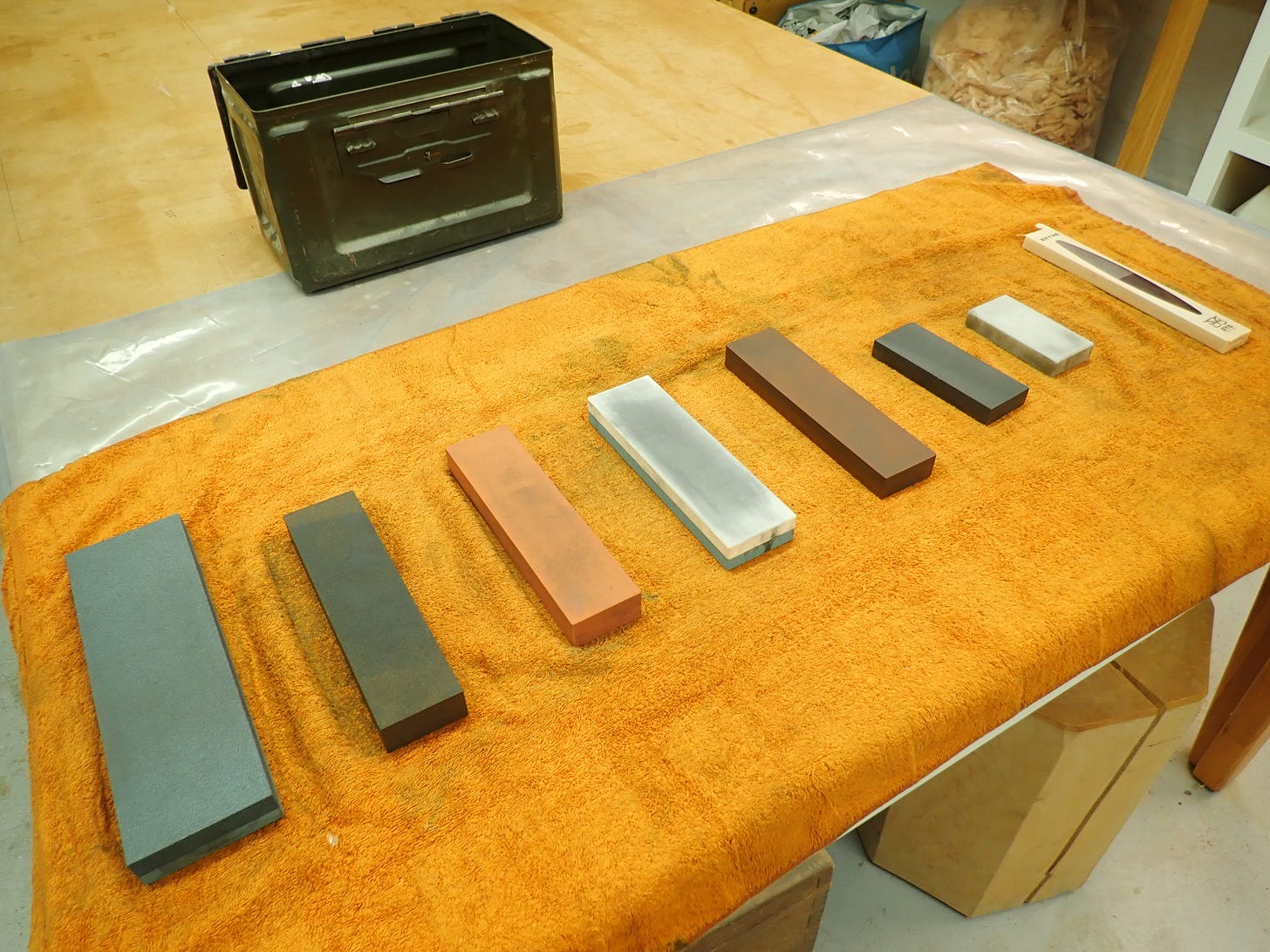
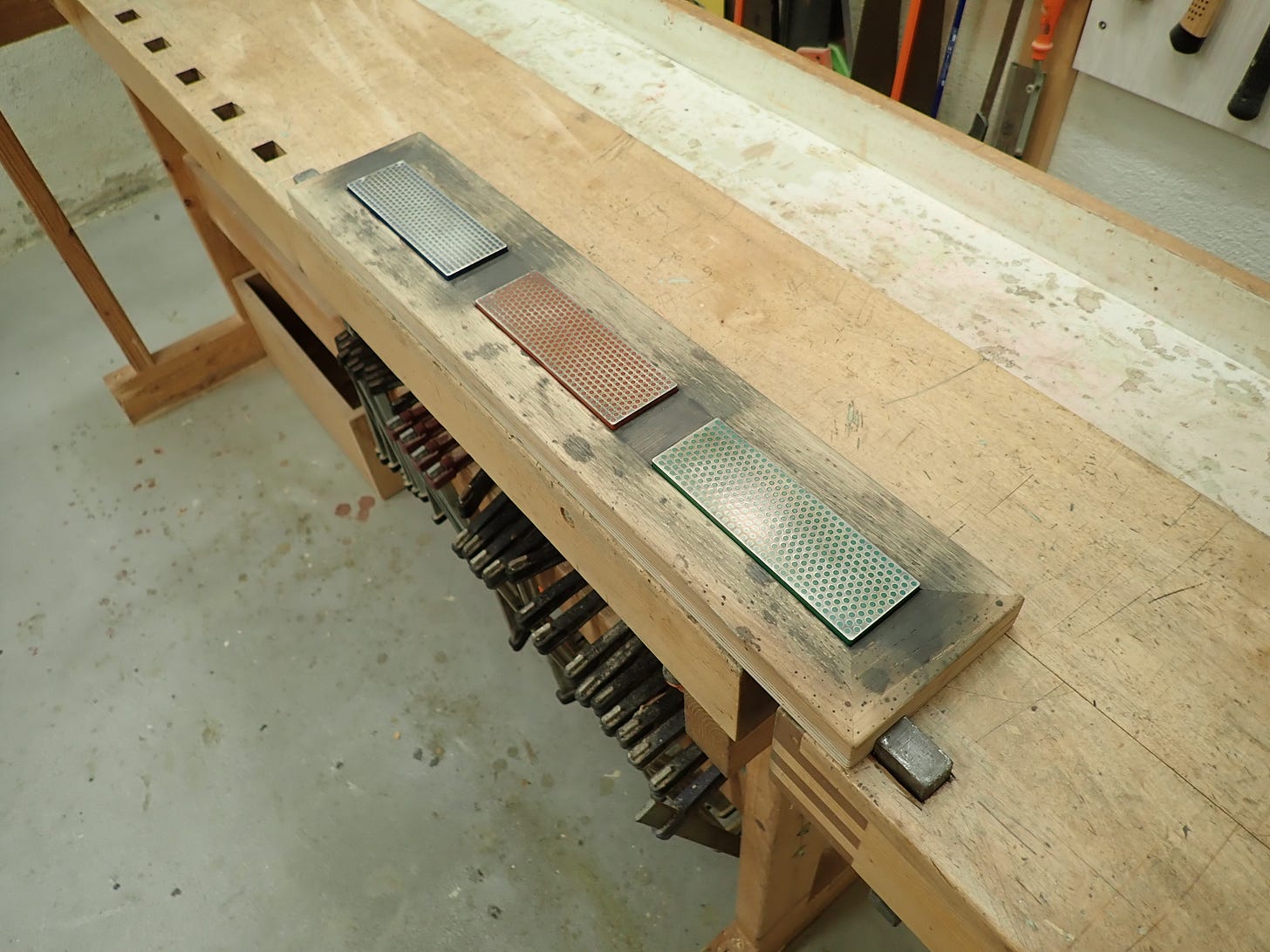
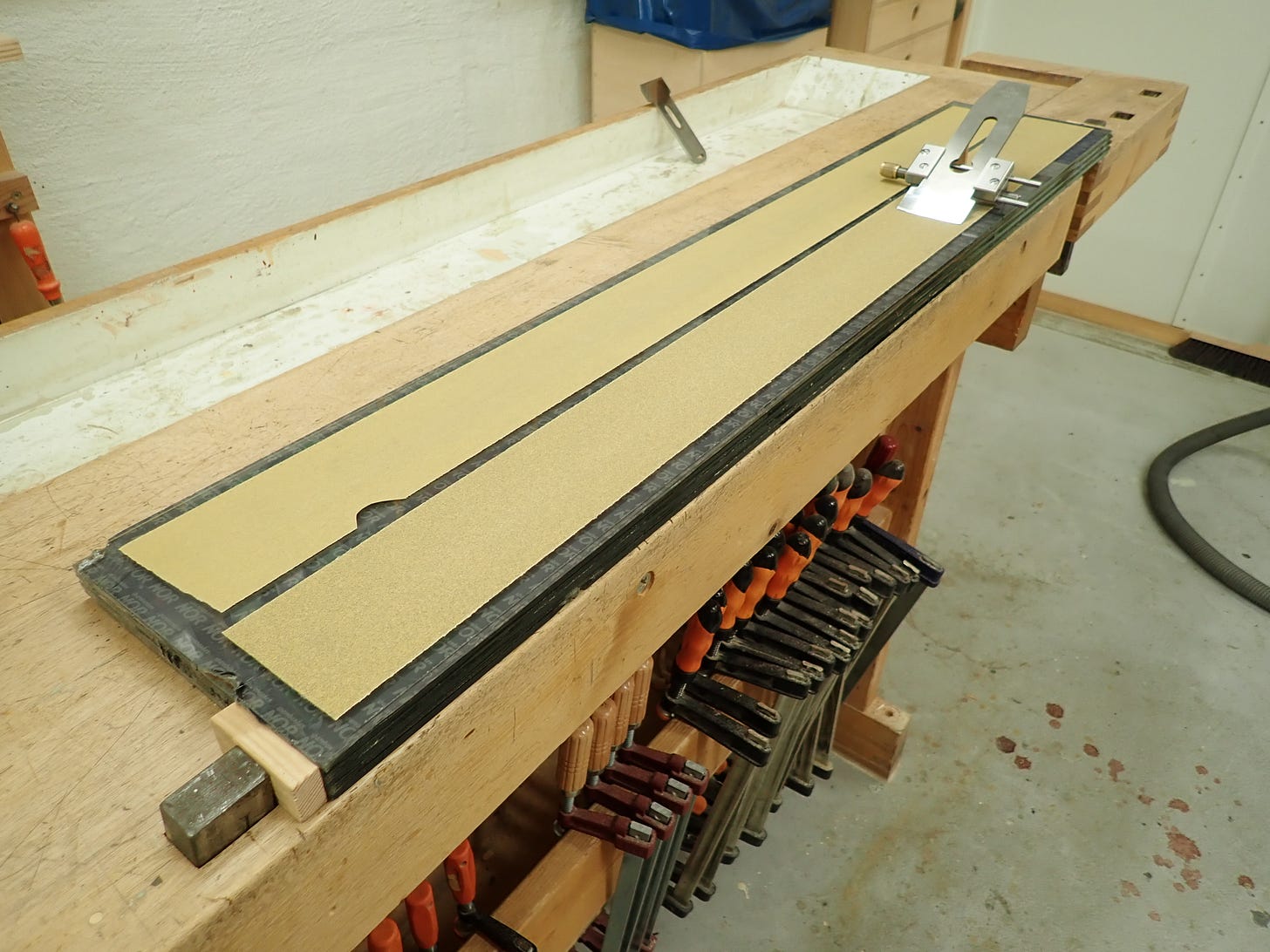
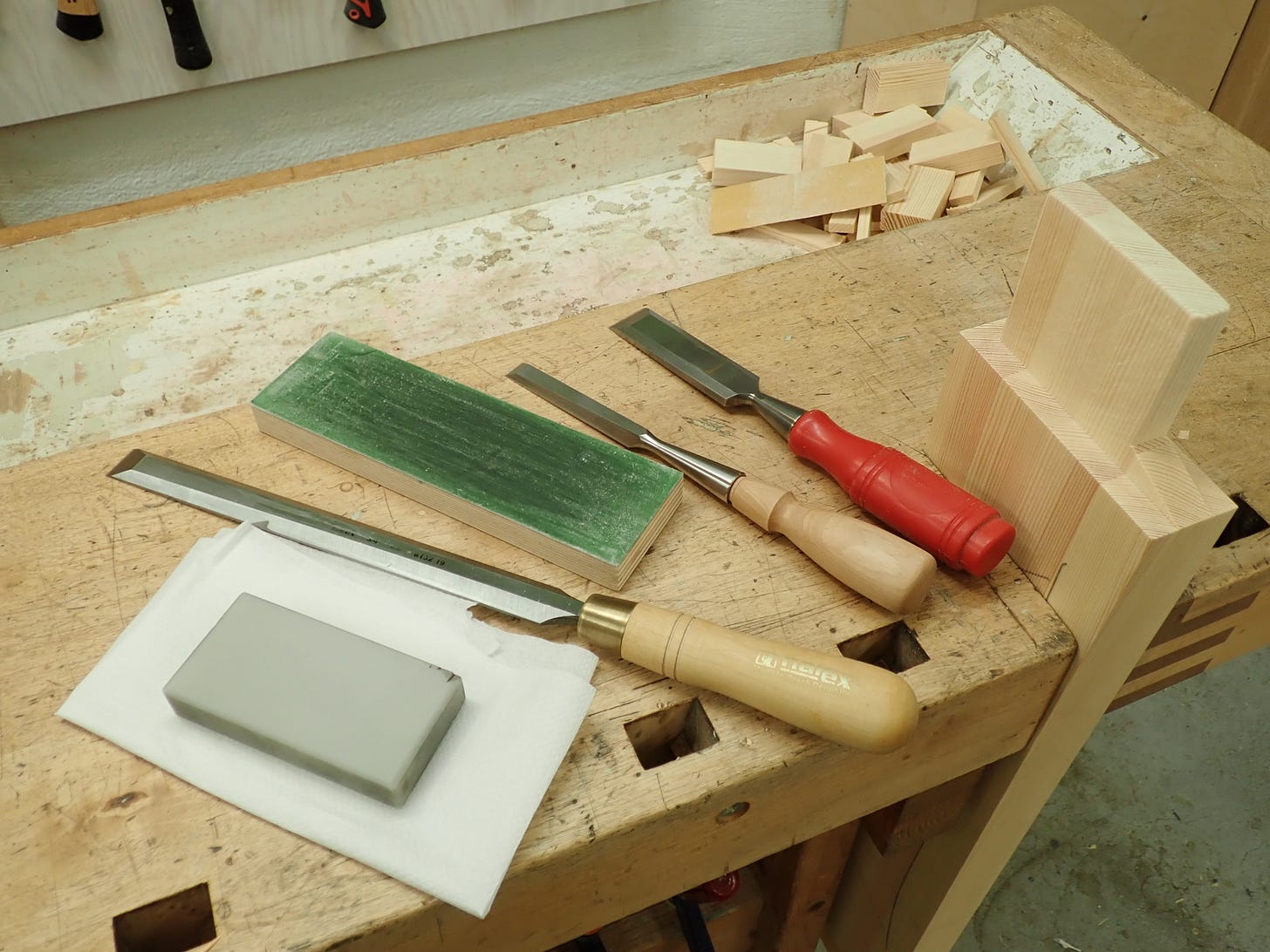

Hopefully those blocks don't cause you to go off on a strop!
Why did you change from diamond stones?
I am planning to start out with a set of cheap diamond stones and use them to learn sharpening.